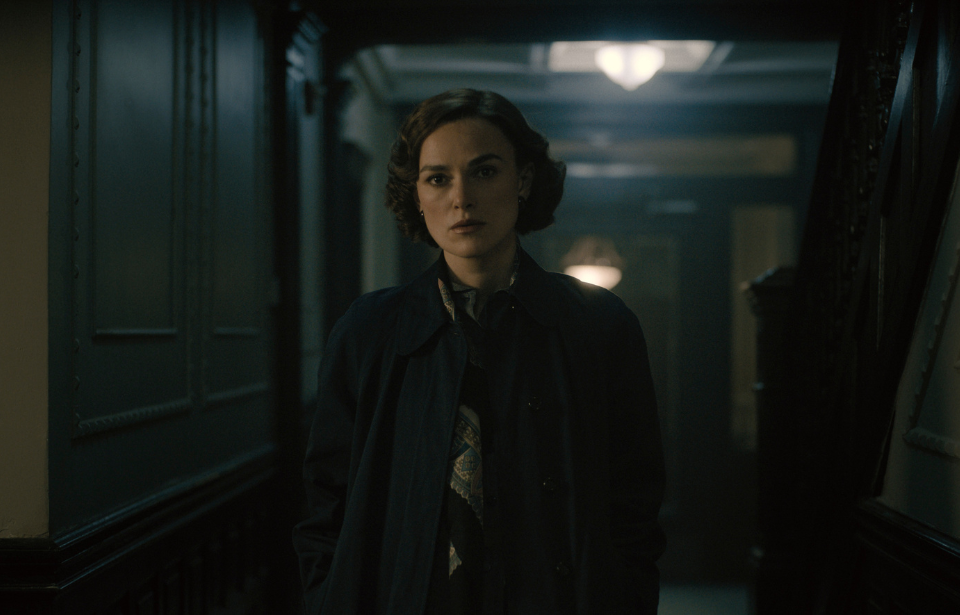Keira Knightley has come a long way from the lighthearted Pirates of the Caribbean franchise. Her latest role is in a gruesome serial killer film based on the series of 1960s murders supposedly committed by a man named Albert DeSalvo. Boston Strangler, the same name DeSalvo was given by the press, covers not only the heinous crimes but the role that two female reporters played in apprehending the perpetrator. Read on to discover what really happened.
THIS ARTICLE CONTAINS SPOILERS FOR BOSTON STRANGLER.
A string of murders
It all started with the death of 55- year-old Anna Slesers on June 14, 1962. Found by her son, she had been strangled with the belt of her housecoat during what looked to be a robbery. Mary Mullen, 85, was found later the same month, dead from an apparent heart attack. On June 30, Nina Nichols (68) and Helen Blake (65) were both found strangled. Each of them had the strangulation device still tied in a bow around their necks. In all cases but Mullen’s, the women had been assaulted.
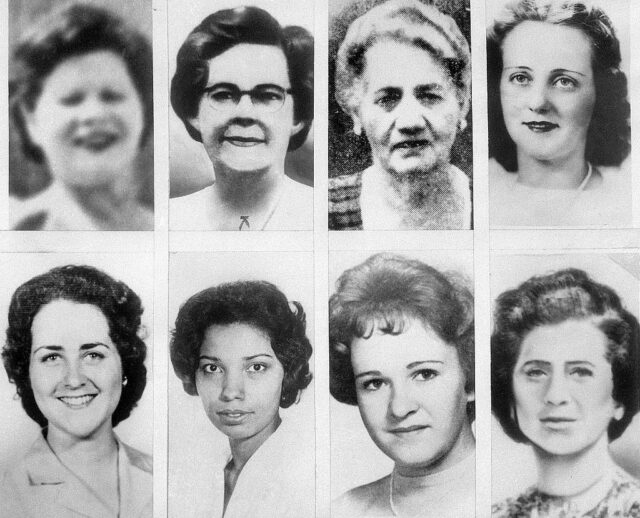
The Boston police couldn’t deny it any longer – they had a serial killer on their hands. Understandably, this sent a wave of panic throughout the city, especially because all of the women had let him into their homes without a struggle. As all the murdered women up to this point had been seniors, it was believed that this was the demographic that the murderer targeted. This was quickly disproven. Nine more women, as young as 19, were killed before January 4, 1964 when the deaths abruptly stopped.
McLaughlin and Cole
Enter the dynamic duo of Loretta McLaughlin and Jean Cole, reporters at the Boston Record American newspaper. They were forced to reckon with the struggles of being women in a male-dominated field as well as dealing with a largely uncooperative police force. Their role was crucial to the case, however, as they were the first ones to put together the theory that the murders were the work of one man. They gave him the nickname “Boston Strangler” in the process.
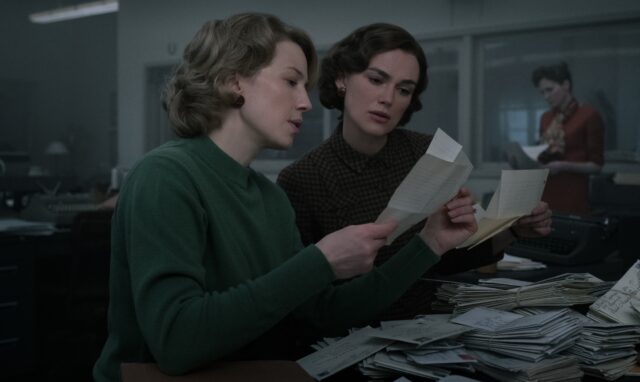
McLaughlin noticed that the first four victims had items tied in bows around their necks and that they were all similar in age, appearance, and social life. Along with Cole, they started warning local women about the crimes, and what they should keep an eye out for. For a month, beginning in January 1963, the pair published almost 30 articles about the murders.
Despite advocating for justice for the victims, their column wasn’t always well received. The authorities, for example, thought that by including so much detail in their reports they would cause people to copy the Strangler’s crimes.
Albert DeSalvo
Months after the Boston Strangler seemed to disappear, 34-year-old Albery DeSalvo was arrested by police for impersonating a detective to enter a woman’s home and sexually assault her. When news of the arrest was publicized, many other women came forward saying they had a similar experience with him. As it turned out he was a serial rapist called the “Green Man” or “Measuring Man.”
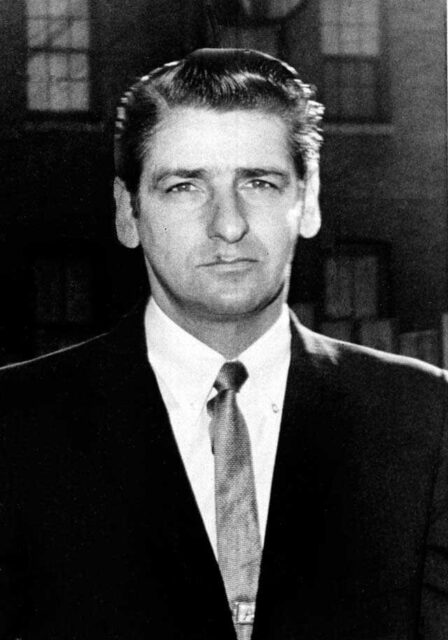
He was sent to Bridgewater State Hospital for the criminally insane where he waited for a trial. While there he was put in a cell with murderer George Nassar. Allegedly DeSalvo told him that he had committed the 13 Boston Strangler murders, a confession that Nassar relayed to his lawyer. The police believed DeSalvo, mainly because he was able to give details about the crime scenes that only the killer would have known.
Life in prison
Even though they had a concrete confession, there was no physical evidence that he committed the crimes. For this reason, DeSalvo was never convicted of the murders. Instead, he was put away for life in 1967 for unrelated crimes: rape, and robbery. He was far from a model prisoner, escaping from Bridgewater with two other inmates. Allegedly it was an act of protest against the living conditions there, and he turned himself in three days later.
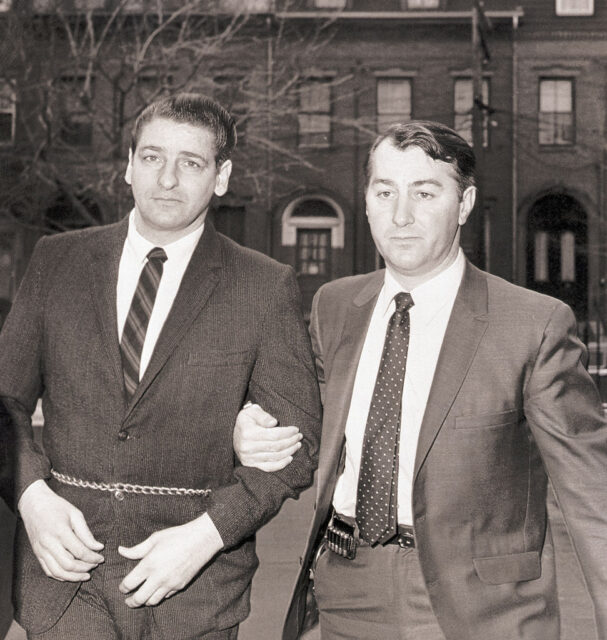
His actions earned him a stay at the maximum security Walpole State Prison. Only six years later he was stabbed to death by an unknown inmate in 1973. It wasn’t until 2013 that DNA evidence was able to link DeSalvo to the murder of Mary Sullivan, the final Boston Strangler victim. Even though he confessed to the killings, the other 12 are still considered unsolved. Part of the reason for this is that there were a lot of doubts that DeSalvo actually did it.
Boston Strangler
Director Matt Ruskin did an impressive amount of research for Boston Strangler, including listening to old interviews with McLaughlin, talking with the families of those involved in the case, and referencing old books and newspapers. He said, “One of the things that really drew me to this story was just how many unexpected twists and turns there were to it. I couldn’t make this stuff up, and so I didn’t.”

Ruskin continued, “That said, there’s always liberties that you have to take when you want to tell a story in two hours. So we compress time in certain places, and of course, dramatize things that maybe in reality are a bit of an oversimplification.” One example of this was the addition of Detective Conley, a completely fictitious character. Alessandro Nivola, who played him in the movie, said that he was actually a compilation of different detectives who had been willing to talk to the two reporters.
Did DeSalvo do it?
While Boston Strangler brings to light the role that McLaughlin and Cole played in apprehending a murderer, what it does best is question whether DeSalvo actually committed all the crimes he was accused of, something most other movies have shied away from. DNA tells us that he committed one murder, but many believe that there were other killers involved, based on patterns of behavior.

The 13 women were all of different ages and ethnicities and were killed in different ways. A former FBI profiler said, “You’re putting together so many different patterns (…) that it’s inconceivable behaviorally that all these could fit one individual.” One of the most famous early profilers, John Douglas, also said that DeSalvo’s criminal profile doesn’t match the one of the Boston Strangler, but does match with someone who would take credit for it.
More from us: The Biggest Historical Mistakes Found In ‘Bridgerton’
Some think it’s more likely that Nassar was the killer all along, telling DeSalvo exactly what to say in his confession. Many experts, particularly those who met DeSalvo before his 1973 death, were completely unconvinced that he committed the crimes. Perhaps he did… or perhaps the real Boston Strangler got away with murder.
